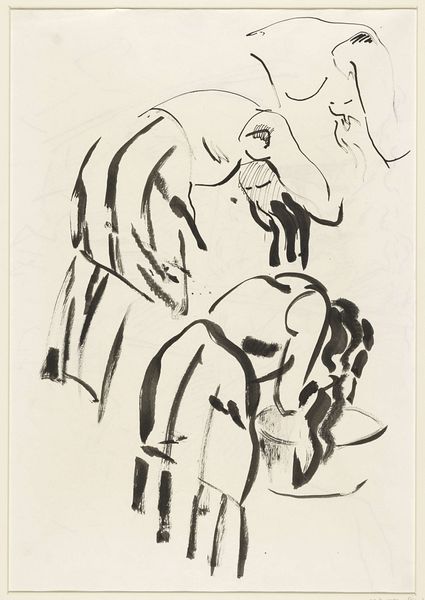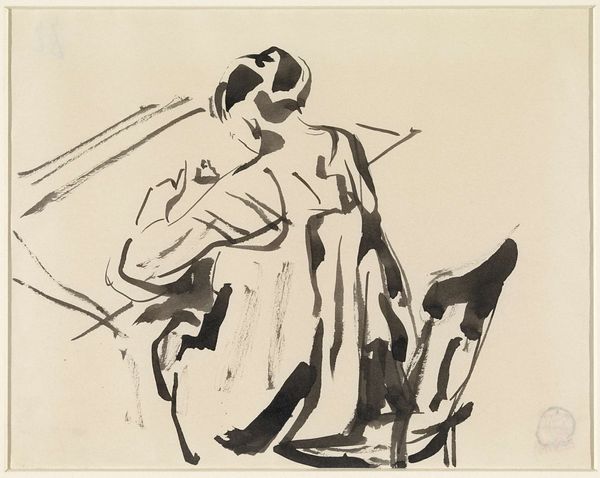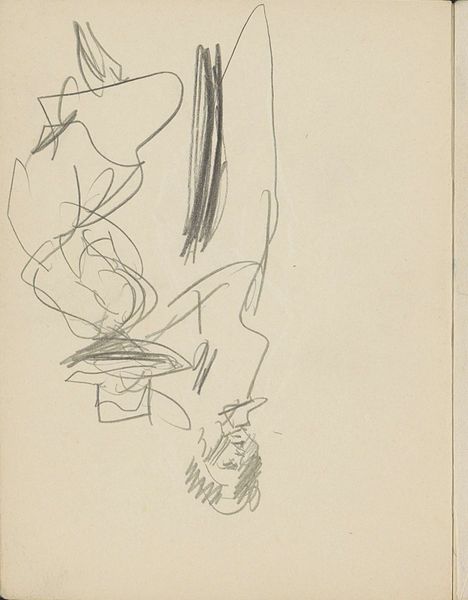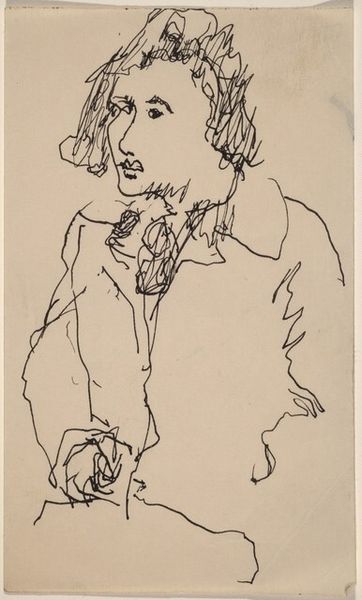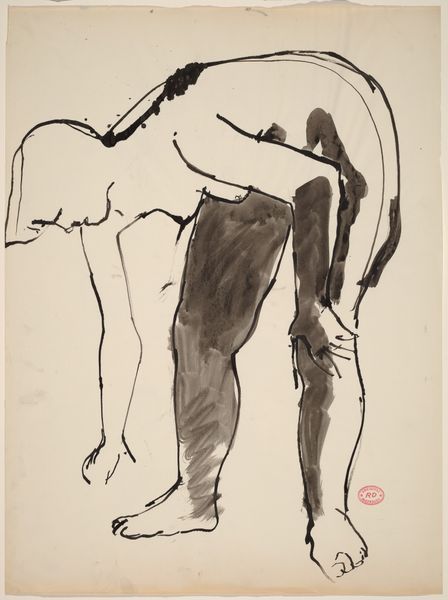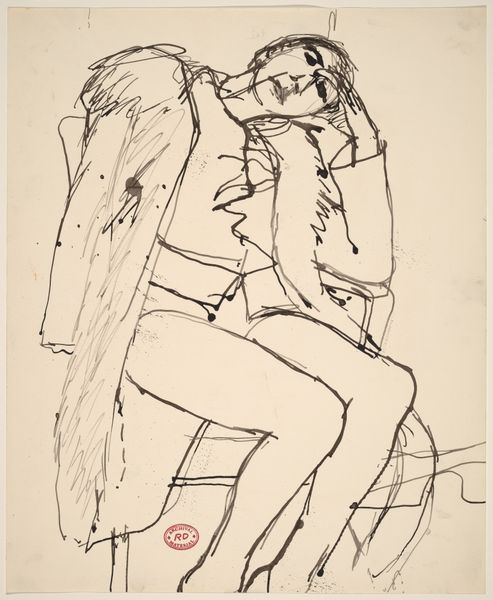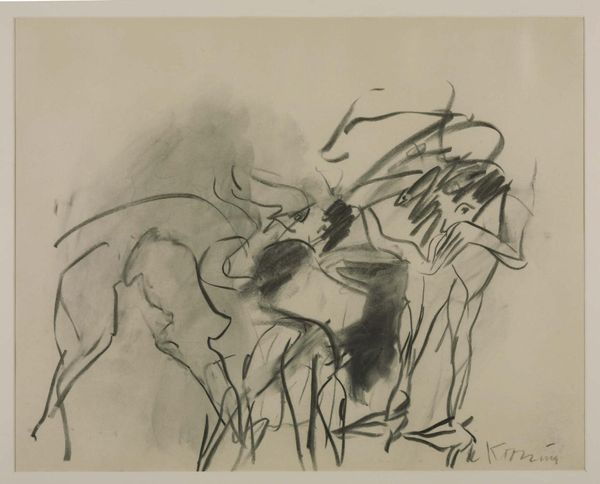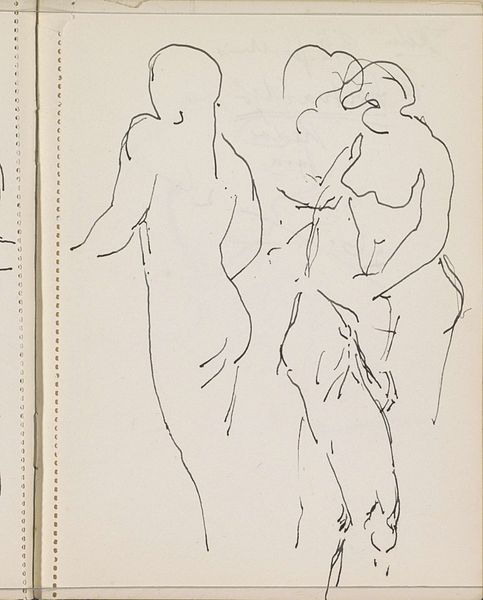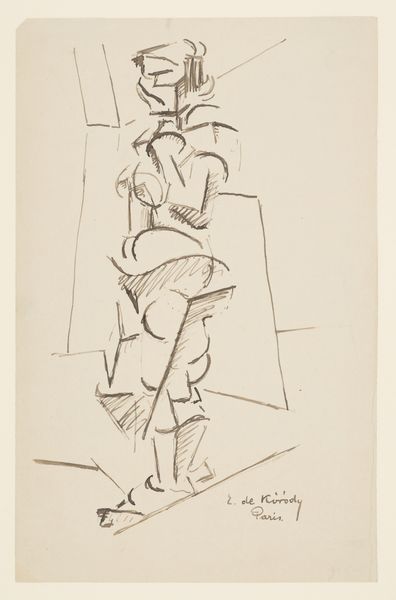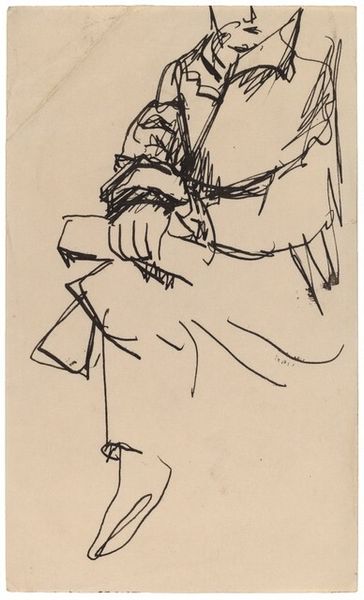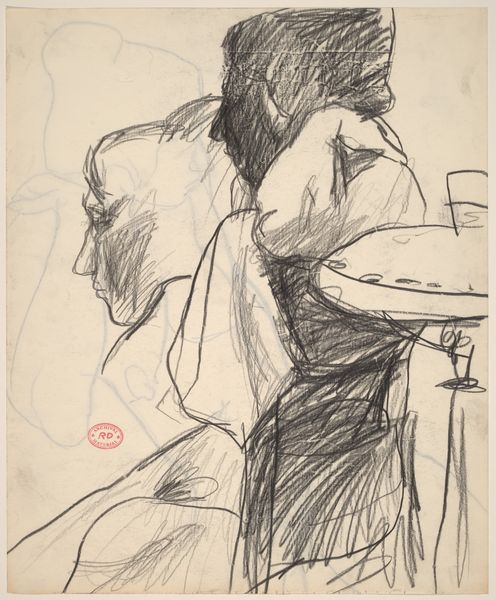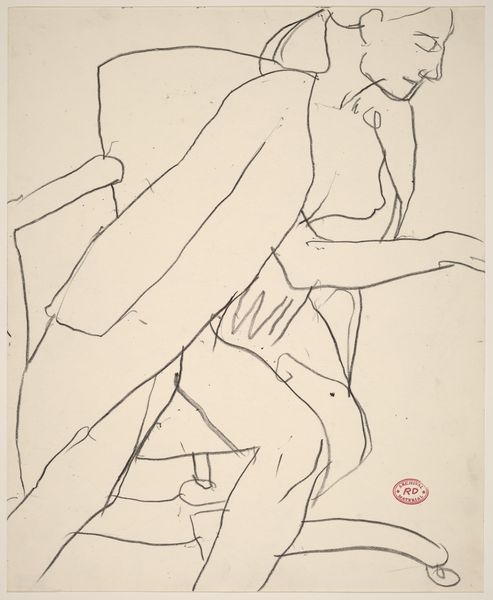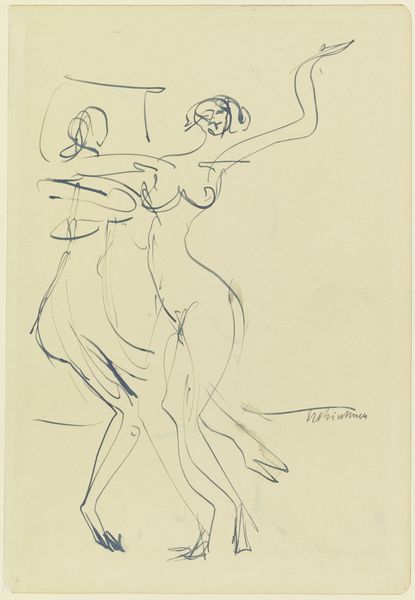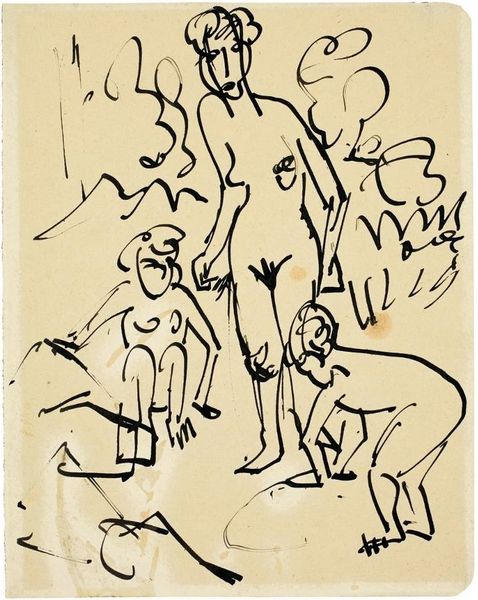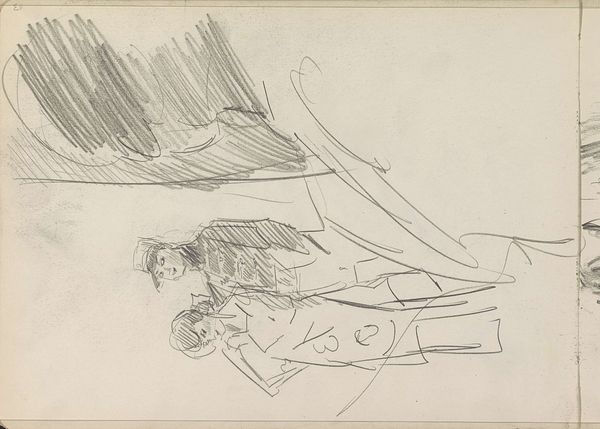
drawing, ink
#
abstract-expressionism
#
drawing
#
ink painting
#
figuration
#
ink
#
abstraction
#
nude
Dimensions: overall: 24.8 x 21.6 cm (9 3/4 x 8 1/2 in.)
Copyright: National Gallery of Art: CC0 1.0
Editor: This is Robert Motherwell’s "Pregnant Nude Holding a Child," a 1953 ink drawing. The starkness of the black ink against the fleshy orange tones is really striking, but I find the composition so fragmented and unresolved. What do you make of it? Curator: Well, seeing it as a product of its time helps. Abstract Expressionism, in the post-war period, grappled with representing trauma and existential anxieties. How might societal expectations about women’s roles at that time, coupled with these anxieties, play out in Motherwell’s representation of motherhood? Editor: Hmm, I suppose the fragmented figures could reflect a feeling of societal pressure or a loss of control? Is the abstract style almost a commentary on how women are perceived rather than how they exist? Curator: Exactly. Consider the institutional history too: galleries and museums in the 50s were largely dominated by male artists. How does that power dynamic influence what gets shown and how these subjects are treated? Think about the ‘male gaze.’ Editor: That’s a really important point. Did Motherwell’s work also reflect the political atmosphere of the time in other ways, consciously or unconsciously? Curator: Absolutely. Think about the Cold War anxiety and the threat of nuclear annihilation. Abstract Expressionism can be viewed as a reaction against representational art forms promoted by totalitarian regimes. Do you think there's an inherent political statement in choosing abstraction at that moment? Editor: Yes, I see that now. Looking at it in this new context, it seems so much more than just lines and colors. It’s a historical and political statement. Thanks for expanding my perspective! Curator: My pleasure! Art always reflects broader social currents, whether the artist intends it or not. That intersection is where the real insights emerge.
Comments
No comments
Be the first to comment and join the conversation on the ultimate creative platform.
